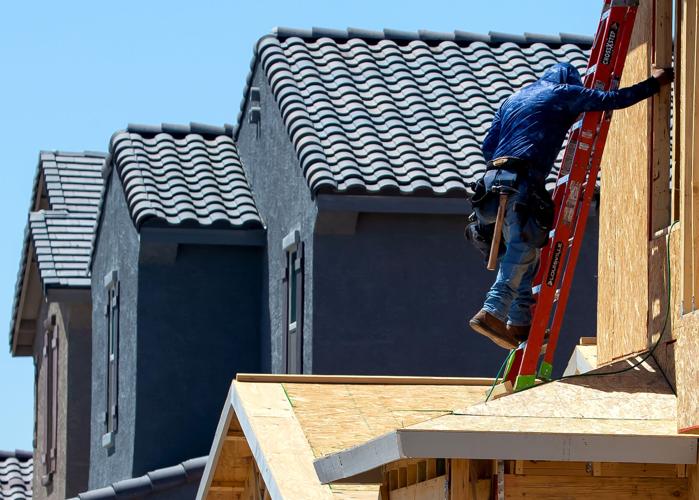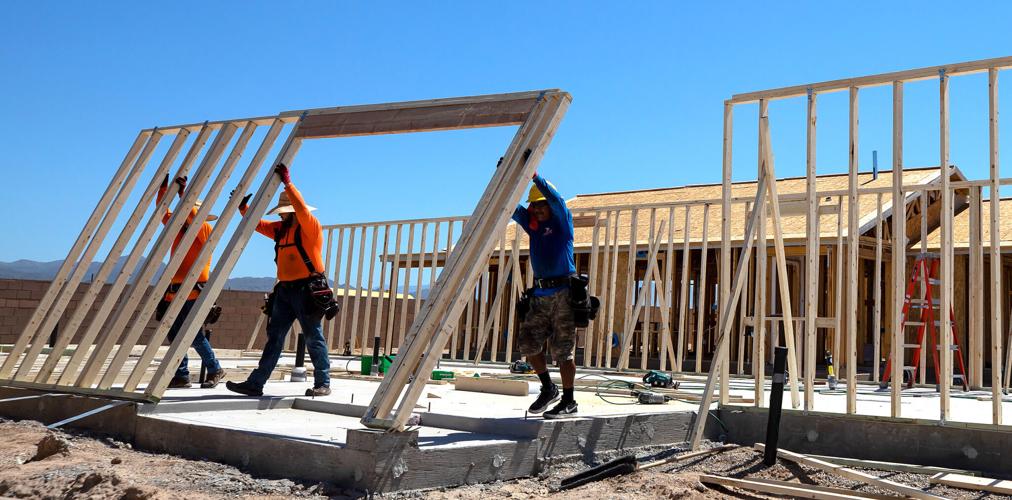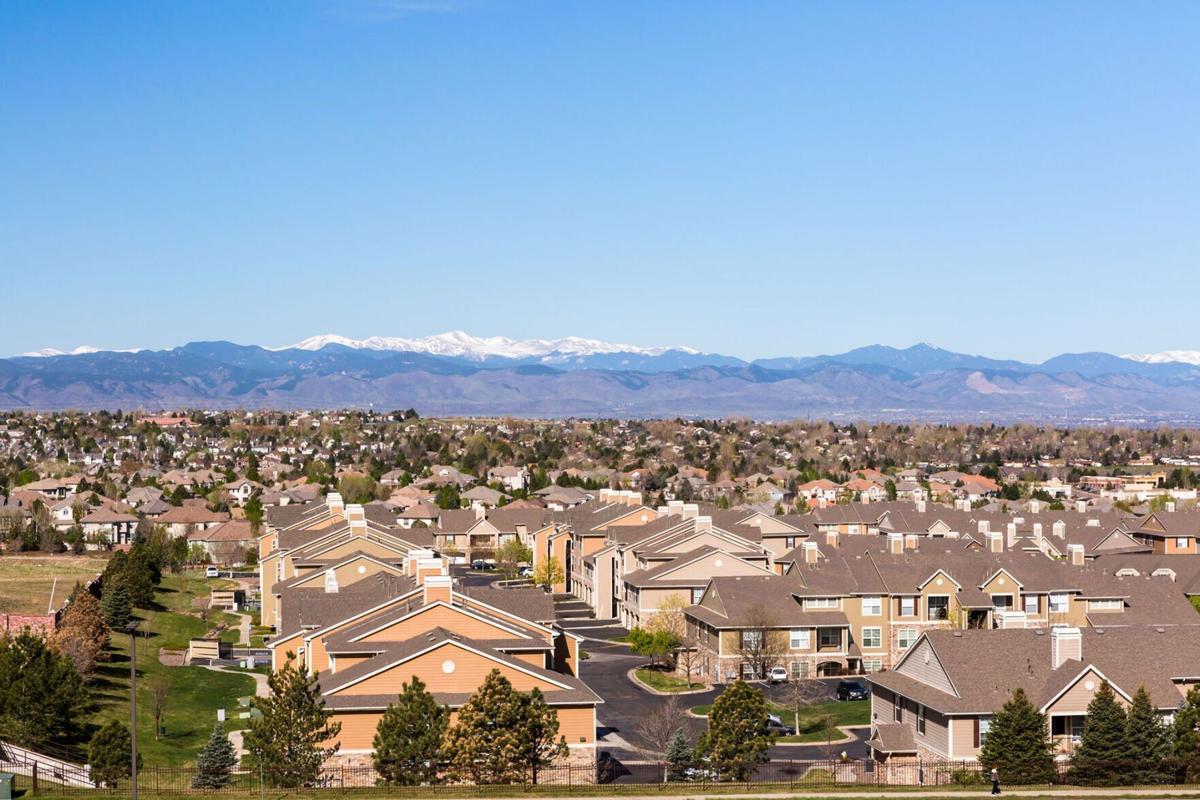Note: This story is part of Squeezed Out, a series from Lee Enterprises that focuses on the escalating housing crisis in the West. Across the region, costs associated with renting or buying property have skyrocketed, forcing many individuals and families to redefine the meaning of home. More than one dozen reporters, photographers and editors across the West contributed to this project.
Solving the housing affordability crisis demands that communities make a choice: grow wider, grow taller or stop growing.
Home prices have soared in recent months as the demand for homes far outpaces supply. Currently, the U.S. is in need of between 3.8 million and 5.5 million housing units to meet existing demand, the Housing Finance Policy Center at the Urban Institute says.
The reasons — and potential solutions — depend on whose opinion you seek.
“People talk about vacation rentals, people talk about greedy builders, absentee landlords and all kinds of other things,” Patrick Barkey, an economist and the director of the Bureau of Business and Economic Research at the University of Montana says. “There’s a million different stories out there.
“Everyone’s asking, ‘What did we do? Manufacture a lot more people all of a sudden?’”
As the American dream of home ownership moves out of reach of many potential buyers, communities are mulling how to reverse that trend.
SPRAWL
Building on the outskirts of cities allows for bigger home sites on less-expensive land.
Homebuilders can build tract homes that are more affordable because they can be built in bulk on land that is bought as a huge lot.
Materials are purchased for multiple homes at once, which lowers costs, and communities can be split up between homes for sale and apartment complexes.
First-time home buyers can live in a community with similar neighbors.
“Because the houses are very similar or even identical, you can feel equal with your neighbors in a tract development,” says Emily Medlock of Homedit, an online homeowners resource site. “There is no ‘keeping up with the Joneses’ when everyone is on an equal playing field.”
Sprawling out to create affordability means scraping open land and creates long commutes for those who can’t afford to live in the urban areas where they work.
Two satellite images from Google Earth show what southeast Phoenix looked like in 2000, then in 2020. The area experienced a significant amount of urban sprawl over the course of the two decades. Slide the circle in the middle of the image above to see the difference.
There’s also an impact on water supply in Western states, especially the Southwest, and the need for a vehicle to get to work.
In Idaho, where the population has grown more than it has in any other Western state in the past five years, many workers have to commute from neighboring towns because they can’t afford anything closer, says Vanessa Fry, interim director for the Idaho Policy Institute, a research group at Boise State University.
More service workers, waiters, teachers and nurses driving long distances every day has an irreversible impact on the land, but the trade-off is less expensive homes for buyers and, for developers, often moving into a town or county that is eager for development when urban cores turn them down.
INFILL
Filling nooks of vacant land in urban areas with homes is an alternative to sprawl.
But aside from custom homes, most developers need multiple units to make the balance sheet work.
They can build up, but taller buildings inevitably draw the ire of neighbors who don’t want their views blocked and dread the congestion or the noise.
“Not in my backyard,” or NIMBY, opposition, delays home projects across the country by an average of 7.4 months, according the National Association of Home Builders and the National Multifamily Housing Council.
Assuming one gets past neighbor opposition, the regulations on building housing are not built for speed.
“We have yet to figure out how the private side can work with the government side to keep the costs down,” says Brian Bonnenfant of the Center for Regional Studies at the University of Nevada, Reno.
Reducing regulations would be a big step, he says.
Parking requirements, for example, require developers to buy more land or build an expensive parking garage.
Instead, builders could be offered incentives for building along transit corridors, Bonnenfant said. That way, they could create developments with fewer parking spots because residents wouldn’t necessarily need to rely on a car.
Other ideas include changing the fee structure so developers don’t have to pay upfront but rather after they’ve built and the units are occupied.
In some communities, laws or ordinances prevent incentives for building affordable housing with traditional tax breaks of fee waivers.
Arizona, for example, prohibits mandating affordable housing. The city of Tucson instead offers height for developers to build in urban cores as an incentive.
At the federal level, one provision of the White House’s plan to get more homes built is to reward jurisdictions that reform zoning and land-use policies with higher scores in certain federal grant processes.
The national home builders’ association estimates that regulation imposed by all levels of government accounts for more than 40% of multifamily development costs.
Among the regulations: zoning requirements, building codes, impact fees, design standards, public land requirements.
The Urban Institute says fewer regulations would help get more houses built, along with lifting restrictions on condominium lending and alternative homes, such as manufactured houses, modular, panelized or precut homes.
“We know what the solutions are,” Bonnenfant said. “It’s just, how do we do it without ruining existing neighborhoods, without gentrifying, without making the government go broke?”
Local officials could do more to engage residents about the need for more housing and acknowledging concerns about the impacts.
Enterprise Community Partners, Inc., a nonprofit that advocates for more housing, offers these suggestions for local jurisdictions:
Engage the community early and often, as development plans emerge and get refined.
Recruit and mobilize community champions who will help to sell the idea to friends and neighbors.
Develop materials that highlight the shared benefit that the community will enjoy because of the development.
Address community members’ legitimate concerns, such as the location of the entrance driveway or the design of the building to better fit in with the existing community.
Share plans for the development and provide examples of past projects so that residents can appreciate the quality.
Establish a point of contact on the development teaming and make that person visible and available to the community.
“With tensions running high, housing advocates have had to get much more creative in ameliorating the concerns of residents — often expressed in terms of parking needs, traffic congestion caused by increased density, community growth that is out of sync with the character of the neighborhood or the view of the skyline that may be impacted by the new housing development across the street,” the organization says. “While advocates are lifting up policy and programmatic solutions, we are missing the opportunity to change the narrative about why housing matters; what ‘affordable housing’ means, why housing is a shared public concern and what needs to be done to fix this problem.”
NO GROWTH
Declaring a town or city “full” with no more room to grow is an appealing thought to some.
“There’s no such thing as a ‘no growth’ community,” says Shane Phillips, an urban planner and policy expert in Los Angeles.
“Cities and suburbs across the U.S. have spent decades lying to themselves: ‘If we don’t plan for population growth, people will choose somewhere else to live.’”
In-demand communities that don’t change policies to encourage more housing will only see home prices and rents continue to rise.
Examples in the west include San Francisco, Los Angeles and Boulder, Colorado.
In the 1960s, Boulder created a greenbelt around the city to discourage dwellings on the hillsides or fringes of the city and limit population.
“The effect has been the narrowing of the city’s population to a hyper elite, while essential workers live on the other side of the greenbelt,” Max Holleran, a sociology professor at the University of Melbourne writes in a recent Washington Post guest piece. “Boulder’s circular open space looks more like an emerald necklace, enjoyed only by those who can afford to live nearby.”
Places such as Seattle and San Francisco put so many restrictions on building housing, in the name of environmental protection, that their markets are among the most expensive in the west.
And they now face hundreds of homeless encampments that have popped up in the shadows of their high-rises.
Growth without accepting it or planning for it will not bode well for smaller communities that have seen a population surge since the pandemic, analysts say.
“The faster you grow without planning for it, the worse your roads are going to be, the worse your water is going to be,” said Laura Jones, a housing coordinator in Rapid City, South Dakota. “Everything becomes more expensive and everything is impacted. Then it becomes a place you don’t want to live anymore.”
Phillips says cities have two choices: to grow the housing stock or to limit homes and grow their housing prices.
“Unfortunately, many places continue to chose No. 2,” he says, “to the great misfortune of renters, younger generations and those without the luck of being born to wealthy parents.”
Oakland, California, is cited by the EPA as a city that has adopted more housing in partnership with the community.
Hismen Hin-Nu Terrace is a 1.5-acre development at an abandoned grocery store site in a distressed area.
The development helped revitalize the neighborhood with 92 affordable rental homes, a community center and commercial space on a major bus route.
The project designer engaged community members in interactive design workshops, and environmentally friendly finishing materials were chosen along with balconies and windows to allow resident to watch over the street and improve security.
The commercial space includes an early childhood education center, nonprofit offices, a convenience store and a market hall for local vendors and start-up businesses.
Outdoor art funded by a National Endowment for the Arts grant spurred redevelopment in the surrounding neighborhoods, including new homes and the renovation of local restaurants.
“Planning must no longer be a tool for those who only want to avoid change; instead, planning can and should be an instrument to build equitable communities for all,” the American Planning Association says. “An outreach strategy can guide planners toward engaging the public and key stakeholders in conversations about housing need, demand, and trends, as well as the consequences of inaction.”




